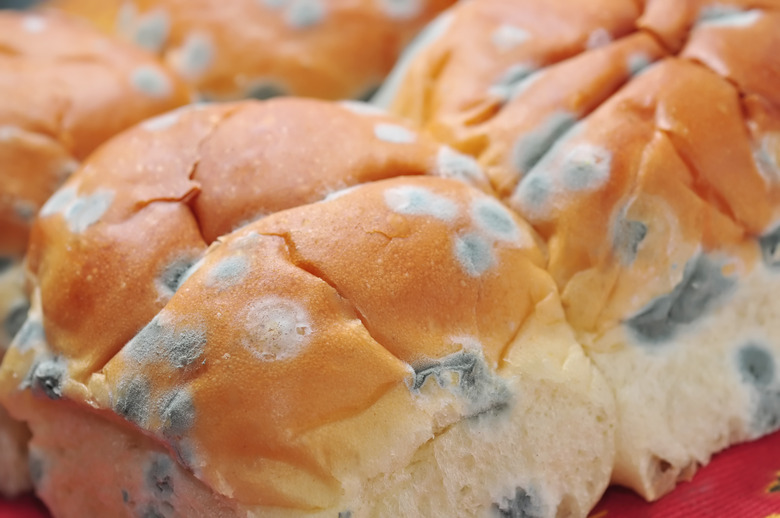Facts On Bread Mold
If left in a warm, dark and moist environment, bread may grow mold. Common bread molds are fuzzy and appear black or blue-green. Certain species of mold can kill bacterial infections.
Causes
Causes
Spores from mold floating through the air land on bread and activate when moisture and temperature conditions are right. Bread mold prefers warm, moist and dark environments.
Types
Types
Although molds can be dry or slimy, the type of mold that afflicts bread is the dry, cotton-textured mold, which grows in threads through the bread.
Colors
Colors
Each species of mold exhibits its own color. The Rhizopus stolonifer species appears black and fuzzy, whereas the penicillium species appears blue-grayish-green with a white border, and is also fuzzy.
Benefits
Benefits
The penicillium species of bread mold is the same species from which scientists extract penicillin, which kills bacterial infections within the body.
Reproduction
Reproduction
Bread mold reproduces by releasing spores into the air, asexually. When the spores land on an object with the correct environmental conditions (light, heat, water and nutrition), they will germinate into a fuzz, then grow roots, mature and then release spores of their own.
Cite This Article
MLA
Tilden, Eric. "Facts On Bread Mold" sciencing.com, https://www.sciencing.com/bread-mold-5811687/. 13 March 2018.
APA
Tilden, Eric. (2018, March 13). Facts On Bread Mold. sciencing.com. Retrieved from https://www.sciencing.com/bread-mold-5811687/
Chicago
Tilden, Eric. Facts On Bread Mold last modified August 30, 2022. https://www.sciencing.com/bread-mold-5811687/
